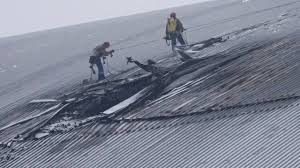Russian Drone Attack at Chernobyl: Implications and Concerns

Introduction
The recent Russian drone attacks in the vicinity of Chernobyl nuclear power plant have raised serious concerns regarding the security of this historic site and the wider implications for global safety. Given the historical context of Chernobyl as the site of one of the world’s worst nuclear disasters in 1986, any military activity in its proximity poses significant risks. The escalation of drone warfare reflects ongoing geopolitical tensions in the region and places a renewed focus on the safety of nuclear facilities amid conflict.
Details of the Attacks
Reports indicate that in early October 2023, a series of drone attacks attempted by Russian forces targeted areas around Chernobyl. Preliminary assessments suggest that while no direct hits were reported on the nuclear facility itself, the precision of these attacks has raised alarms among international watchdogs. The Ukrainian government has condemned these attacks, labelling them reckless and irresponsible, further complicating the already volatile situation in the region.
Officials from the Ukrainian Nuclear Regulatory Inspectorate have expressed their concerns regarding the possibility of damaged infrastructure or a potential breach that could lead to hazardous material exposure. Fortunately, as of now, there have been no signs of radiation leaks following the drone attacks, thanks in part to the robust safety protocols remained in place since the reactor accident.
Geopolitical Context
These attacks come amid an ongoing conflict between Russia and Ukraine, exacerbated by Russia’s military campaign which has seen a range of tactics employed, including aerial drone warfare. The usage of drones highlights a tactical shift that poses risks not only to military assets but to civilian and ecological safety as well.
Experts suggest that understanding the motivations behind such attacks can provide insights into Russia’s strategic objectives. The proximity of military operations to nuclear sites illustrates a blatant disregard for international nuclear safety norms, posing questions about the potential for catastrophic incidents that could arise from such reckless military actions.
Conclusion
The Russian drone attacks near Chernobyl signify not only an immediate threat to the safety of this crucial site but also illustrate the growing tension between military operations and nuclear safety. As geopolitical unrest continues, the international community must remain vigilant and proactive in ensuring that nuclear facilities are protected against military conflicts. Future engagements may require enhanced diplomatic efforts to shield critical infrastructure from warfare and to maintain global safety standards. The Chernobyl incident not only serves as a cautionary tale from history but also a reminder of the responsibilities shared by nations to prevent disasters that could have far-reaching consequences.









